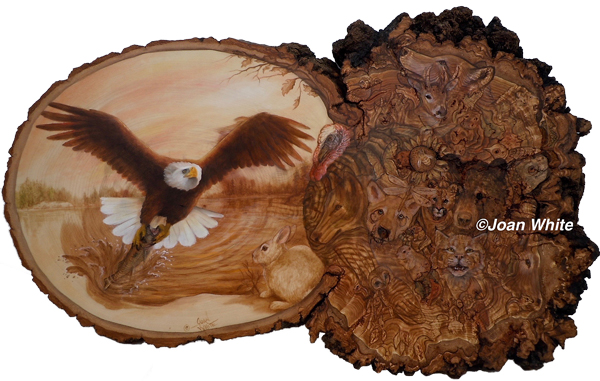I count it as quite a morning to wake up with two countries praising both species of Castor in an unexpected double whammy. And the thunder and lighting show just makes everything more exciting. First the German with our friend Gerhard Schwab, Google translate helps me with the following rendition:
Nager mit Biss
Rodents with a bite
The beaver is a misunderstood eco-genius: studies show that its dams increase biodiversity and improve water quality. But when the dammed water causes crop failures, there is trouble. Beaver managers settle conflicts on site.
 Click on the link for a lovely short and unembeddable film about the beaver conflict resolution offered by Gerhard and why cooperating with beavers is such a very good idea. There’s a wonderful graphic about pond complexity and nice footage of the wildlife that enjoys the pond. It’s wonderful but Gerhard says it hasn’t been released in English yet. Just get the visuals for now.
Click on the link for a lovely short and unembeddable film about the beaver conflict resolution offered by Gerhard and why cooperating with beavers is such a very good idea. There’s a wonderful graphic about pond complexity and nice footage of the wildlife that enjoys the pond. It’s wonderful but Gerhard says it hasn’t been released in English yet. Just get the visuals for now.
And when you’re done visiting Germany, why not visit Canada. The home of Whistler’s mother, to be precise.
FORK IN THE ROAD: Canada’s largest rodent is a joy in more ways than one
So where do I finally see a giant one, out of the water, trundling along, minding her own business before gnawing down two willow saplings twice as tall as me faster than you can say Lord Beaverbrook? In Vancouver’s Stanley Park—the lovely Ceperley Meadow now so wisely allowed to naturalize into a wetland, along with beavers’ help.
 Luckily, a volunteer from the Stanley Park Ecological Society just happened to be there, so he filled us in. First, she was a she, since it’s hard to tell a male from a female by sight alone as they’re about the same size and rich, glossy brown colour. Madam Beaver is eight years old, middle-aged for a wild beaver, though reports regarding average lifespan vary widely, to as much as 20 to 24 years.
Luckily, a volunteer from the Stanley Park Ecological Society just happened to be there, so he filled us in. First, she was a she, since it’s hard to tell a male from a female by sight alone as they’re about the same size and rich, glossy brown colour. Madam Beaver is eight years old, middle-aged for a wild beaver, though reports regarding average lifespan vary widely, to as much as 20 to 24 years.
Not only are they instrumental in rebuilding the wetlands of Stanley Park, as biologist Bob Brett of Whistler Naturalists points out how useful beavers are in Whistler. “Protecting beavers is the best way to protect Whistler’s wetlands,” he says, three-quarters of which have been lost to development. See all those migrating Western toads Lost Lake Road has been closed to protect? The wetland habitats beavers create increase breeding opportunities for them, too.
As Bob and I can tell you, seeing a beaver in the wild is a joy. And it’s not hard in Whistler.
I can’t tell you how happy I get when people enjoy seeing beavers. Although he talks about an 8 year old being middle aged, which I think is very ambitious for a wild beaver.
“We’ve documented about 25 active beaver lodges in Whistler Valley last year,” he reports, about two-thirds of them on the River of Golden Dreams and adjacent wetlands in the Wildlife Refuge and Rainbow Wetlands, and in the Millar Creek Wetlands. Two obvious places to see active lodges are in Alta Vista Pond, just north of Nordic, and upstream of the Valley Trail Bridge over the River of Golden Dreams.
Go and watch, but watch respectfully. That includes not plowing your orange Explorer inflatables through an important dam that beavers so skillfully built.
Plus I’m always happy when anyone advises people now to plow over a dam. People act like its the easiest thing in the world to fix the damage they cause when they canoe or hike over a dam. We know otherwise.






 Yesterday I listened to a very interesting webinar by WGBH in Boston which was basically author Ben Goldfarb interviewing author Judith D. Schwartz about her concept of nature using nature to heal itself.
Yesterday I listened to a very interesting webinar by WGBH in Boston which was basically author Ben Goldfarb interviewing author Judith D. Schwartz about her concept of nature using nature to heal itself.  He of cou
He of cou



 No. Who is José?
No. Who is José? José knocked trees down?
José knocked trees down? August 12th is a prodigious day. It’s the day that in 1957 in the little naval hospital of Portsmouth England, Jon Ridler was born. In case the name sounds familiar he is the treasurer of Worth A Dam, the man of 100 tasks at the beaver festival including beaver tours, and my husband of lo, these many years. Happy Birthday Jon!
August 12th is a prodigious day. It’s the day that in 1957 in the little naval hospital of Portsmouth England, Jon Ridler was born. In case the name sounds familiar he is the treasurer of Worth A Dam, the man of 100 tasks at the beaver festival including beaver tours, and my husband of lo, these many years. Happy Birthday Jon!



































